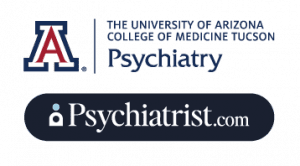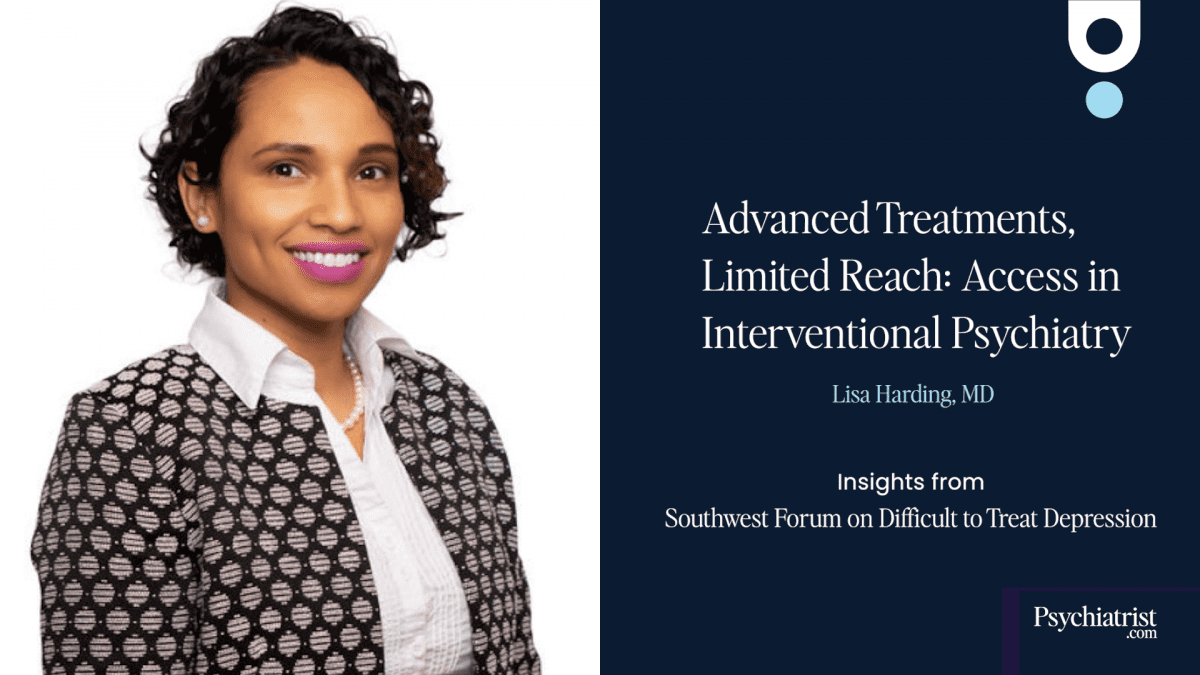Nolan Williams, MD, is an associate professor at Stanford University and director of the Stanford Brain Stimulation Lab, a research program developed to explore innovative technologies and therapeutics capable of modulating the neural circuitry disrupted in mood disorders, OCD, and other neuropsychiatric conditions. Williams and his team at BSL have been developing neuroimaging-based approaches to more accurately target therapeutic delivery and predict treatment responses to therapeutic neuromodulation and psychedelics.
In this discussion, Williams discusses one of those approaches, Stanford accelerated intelligent neuromodulation therapy (SAINT) or Stanford neuromodulation therapy. It’s a rigorous, tailored form of transcranial magnetic stimulation. Williams discusses – in detail – on this novel therapy, which showed successful remission rates (up to 79 percent), within days (typically less than three), and nominal side effects (usually temporary fatigue and headaches).
Nolan Williams, MD
Associate Professor
Stanford Medicine
Stanford, CA
| This presentation was part of the “Southwest Forum on Difficult to Treat Depression: Focus on Approach, Algorithms, and Access” in July at the Arizona Biltmore in Phoenix. Psychiatrist.com worked with the University of Arizona College of Medicine – Tucson Department of Psychiatry.
To learn more and watch more videos, visit our Difficult to Treat Depression Clinical Resource Center. |
 |
|---|
Transcript
[00:12 – 00:40] Introduction
I’m Nolan Williams. I’ll be speaking briefly about our technology. We developed the lab, which we called SAINT, or Stanford Accelerated Intelligent Neuromodulation Therapy.
[00:40 – 01:40] Overview of SAINT’s Stimulation Approach
SAINT is a stimulation approach. We currently apply this to a transcranial magnetic stimulation device, and the idea is that it’s a kind of rethinking of how to do brain stimulation in psychiatry and, you know, in potentially neurological illness as well, where you’re thinking about the where, and the where meaning kind of the personalized brain network target. The how, meaning how do you stimulate? In this case, we use hippocampal physiology, mammalian physiology, to guide that question, and then the how much, and so there’s clearly a dose response that can happen in brain stimulation similar to how it works in pharmacology as well.
[01:40 – 02:40] The Three Fundamental Questions of Brain Stimulation
This is another way of looking at that same information, and so where in the brain that you are stimulating is up on the left A panel, and it’s different in everyone, and then the kind of how is the right panel, so using space learning theory-based stimulation, so playing a memory signal into the brain to tell the brain to turn on, remember to turn on and stay on, and then this C panel showing the how much. How much stimulation do you need in order to have the behavioral response that you intend to get, and that’s different in everybody as well, so SAINT really takes into account those three fundamental questions, and so we give, you know, 1,800 pulses of this hippocampal physiology-based simulation approach, and we’re able to compress an entire six-week course of data burst TMS into a single day, and we do that in an individualized personalized medicine target.
[02:40 – 03:50] SAINT’s Clinical Application and Results
So our randomized controlled trial that we published in the American Journal of Psychiatry a couple years back. These were 22 to 80 year olds with a with a moderate and HAM-D score in the moderate severity range or above, and treatment resistance at the kind of moderate to high treatment resistance level in the Molesley refractoriness scale, and what we found is that, you know, we were able to recruit, you know, very severe folks, you know, an average length of current illness of around nine years, 50% of people were on disability from depression, you know, five plus or minus two med failures, and they had a, you know, moderate to high severity on the depression acute severity scores, suggesting this was a pretty sick population, and we found, you know, pretty striking response rates on the bottom. You can see this, you know, kind of 70-ish and above percent response rates, and Cohen’s d effect size is above one any way that you analyze this data, which is a very large effect, and you can see that most people in this cohort crossed the remission line at some point in the four-week follow-up in the active group, whereas in the sham group, a minority of people crossed that remission line.
[03:50 – 05:00] Biomarker Discovery and Predictive Success
And then we found a biomarker we can actually predict this effect, and this was published in Proceedings of National Academy of Sciences, so we actually looked at the time series of the blood fluctuations in these brain regions that reflect electrical activity, and in normal healthy controls, this dorsolateral prefrontal cortex precedes the cingulate kind of conflict-sadness brain region, and in individuals receiving SAINT, we were able to flip that signal to make them look like normal healthy controls after you treat them on the post-scan, and that flipping of the signal correlated with changes in the MADRS score if you measured it in the anterior cingulate, but in the pretreatment, what we found was that the pretreatment depressed individuals, a majority of them had the signal flipped, so that the cingulate preceded the dorsolateral prefrontal cortex, and that was true in our scanner, that was replicated in the WashU scanners, and the folks that had the abnormality are the ones that remitted, and the ones that were able to show a clinically relevant response to SAINT, whereas the people that were non-responders of SAINT had a normal-looking brain from this perspective, and as you increase the severity, the probability of the signal being there goes up, suggesting that we have early makings of a biomarker prediction for SAINT, so we’re really excited about that.
[05:00 – 06:10] Clinical Significance and FDA Approval
The big takeaway is, you know, we can use neuromodulation to get people out of, you know, very severe chronic depression, you know, an average of 2.6 days, you know, and from our perspective, that’s very important because it matches the, you know, the speed of treatment matches the acuity of the illness. So this whole approach that I’m talking about is FDA cleared, breakthrough status, and now paid for by Medicare, you know, so paid for through innovation funds for inpatient and outpatient hospitals, so it’s something, so SAINT is something that people can get and implement into their clinical practice right now if they treat Medicare patients, and hoping that commercial payers will follow, so it’s not something that, you know, is a future aspiration, it’s something that can be done today.
[06:10 – 06:26] Conclusion
So, in summary, SAINT offers a novel and effective approach to treating severe chronic depression, with significant clinical evidence supporting its use. This technology is not just a future aspiration, but a viable treatment option available today.



